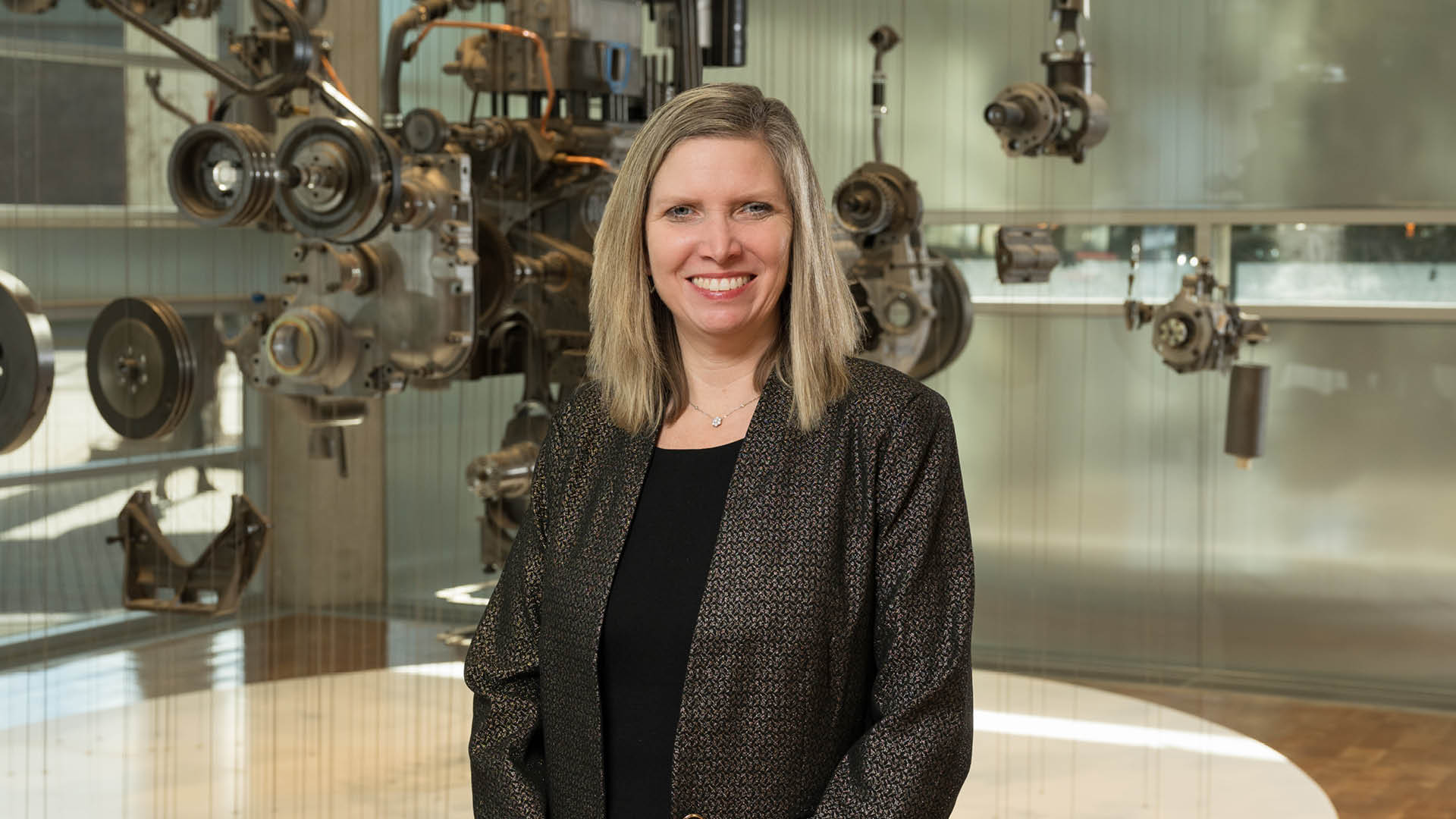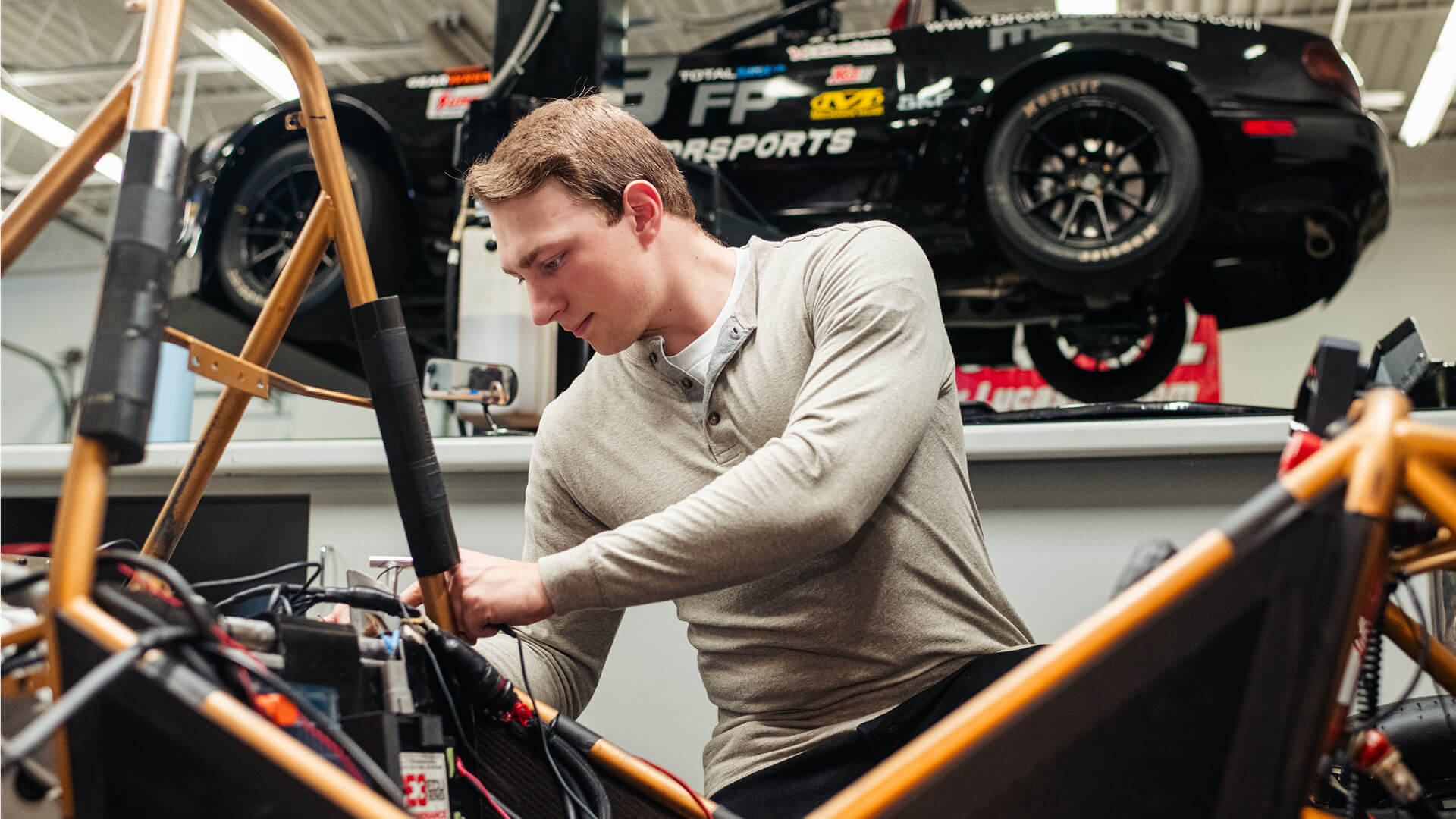Purdue Global, PPHS carry on tradition that dates back to Purdue’s founding

Purdue University was founded with a mission to make a practical and proven education available to all. That 153-year-old tradition continues today through initiatives like Purdue Global, Purdue University Online and Purdue Polytechnic High Schools. (Purdue University photo/Hannah Gaber)
As a land-grant university, Purdue exists to provide educational opportunity
Nearly 45 years after she attended her first class on Purdue University’s West Lafayette campus, Cynthia Walker Middleton finished what she started by completing an online degree in business administration through Purdue Global.
Justin Marvin enrolled at Purdue Global with the hope that a college degree would strengthen his chances of someday achieving a high-level leadership position in fire and emergency management.
And despite being diagnosed with breast cancer during her studies, Sheila Taylor stuck it out and completed a master’s degree in accounting to show her daughter what a dedicated student can accomplish.
Each of Purdue Global’s 34,000 students – 60% of whom are over age 30 and nearly half of whom are first-generation college students – has their own unique motivation for working toward a college degree. But whether it’s to qualify for a promotion, change careers or upskill to prepare for future work responsibilities, the unifying theme is that they believe a Purdue Global education will open a door to a better life.
Purdue University was created to provide such educational opportunities and to serve the people of Indiana and beyond. And the university remains committed to that founding vision for land-grant institutions, as evidenced by its investment in modern-day educational initiatives like Purdue Global, Purdue Online and Purdue Polytechnic High Schools (PPHS).
“At its core what ‘land grant’ means is it’s an institution whose mission is to provide opportunity,” says Frank Dooley, Purdue Global’s chancellor. “The common thread to me, and the mission of Purdue, is there are people who need an opportunity for a great education. How do we provide that opportunity to these different populations of students?”
Purdue leaders have worked to answer that question since Indiana Gov. Conrad Baker signed a bill creating the university on May 6, 1869.
When Purdue first opened its doors five years later, entrance exams revealed that only 13 of the 39 enrollees were academically prepared for rigorous college study. The faculty adapted by hastily creating the Purdue Academy, a preparatory program that Purdue operated for the next 20 years.
“They knew a lot of students coming in off the farm didn’t necessarily have the education they needed to start a college education, but they made that commitment to get them up to speed,” says Adriana Harmeyer, archivist for university history with Purdue University Archives and Special Collections.
Among the Purdue Academy’s first students was 14-year-old Chase Osborn, who went on to become governor of Michigan.
“(The faculty) taught whatever was assigned them whether in their line or not,” Osborn recalled in “Purdue University: Fifty Years of Progress” by William Hepburn and Louis Martin Sears. “It was a willing, facile, mobile gathering that made the beginnings of Purdue and did their work perhaps better than they knew. It was the true Hoosier spirit which was to do as well as possible whatever the hand found to do.”
Such adaptation was perfectly in line with what it meant – and still means – to be a land-grant institution.
Prior to the revolutionary Morrill Act of 1862, U.S. colleges were the domain of the wealthy and well-connected. The initial bill and subsequent legislation opened university doors for the first time to the American working class, transforming a post-Civil War nation and launching the 112 land-grant institutions that still contribute to growth and prosperity today.
Beyond the millions of graduates who benefited from practical college educations that provided pathways to successful careers, the nation’s land-grant universities have improved the world in countless additional ways. They conduct research that helps feed the needy and heal the sick, and they drive economic development that elevates their home states and nation.
These land-grant universities were created with a very specific mission, and that was to provide a high-quality education for sons and daughters of working-class people who did not have the opportunity within the existing educational structure.
Victor Lechtenberg
Former Purdue dean of agriculture
“These land-grant universities were created with a very specific mission and that was to provide a high-quality education for sons and daughters of working-class people who did not have the opportunity within the existing educational structure,” says Victor Lechtenberg (PhD agronomy ’71), who worked at Purdue under six different presidents across four decades, holding leadership positions that included dean of agriculture, vice provost for engagement, director of the Center for Regional Development and special assistant to the president.
“That early charge created a mindset – I’ve often referred to it as the DNA of the university – to solve practical problems wherever they were and do things that are relevant to the challenges and issues society is facing.”
A Mission That’s Alive and Well
That problem-solving mentality inspired Purdue’s leaders to freeze tuition for West Lafayette students for more than a decade; create a pathway to Purdue for underserved and underrepresented high school students in Indiana via the growing PPHS system; offer first-rate graduate instruction and professional enrichment online with Purdue Online; and expand outreach to working adults through Purdue Global.
According to data from the Organization for Economic Cooperation and Development, 50% of Americans ages 25-64 have no postsecondary education. At the same time, the National Student Clearinghouse Research Center reports that more than 39 million Americans had earned some college credit but no credential as of July 2020.
Indiana accounted for 745,358 of those citizens with incomplete college experiences. That grim state of affairs emphasized the need to provide opportunities to close the skills gap and fill open positions in an economy that increasingly values advanced training over physical labor.
It was another opportunity for Purdue to respond to society’s greatest challenges. Its 2017 acquisition of Purdue Global gave working adults a chance to earn academic credentials from a proven, trusted name brand in higher education.
“I’m excited by this opportunity for a world-class university to expand its reach and help educate adult learners by acquiring a strong for-profit college,” former U.S. Secretary of Education Arne Duncan said at the time. “This is a first, and, if successful, could help create a new model for what it means to be a land-grant institution.”
This is a first, and if successful, could help create a new model for what it means to be a land-grant institution.
Arne Duncan
Former U.S. Secretary of Education, on Purdue’s 2017 acquisition of Purdue Global
With similar intentions, Purdue created PPHS to improve the odds that Indiana’s public-school graduates – particularly low-income, first-generation or minority students – could attend Purdue and succeed.
Kayla Owens was among 40 PPHS inaugural graduating class members who enrolled at Purdue in fall 2021, more than doubling the annual average for new Boilermakers from the entire Indianapolis public school system.
“I knew PPHS was created for a bigger mission,” says Owens, who is working toward a degree in computer and information technology in Purdue Polytechnic Institute. “I knew that I should do whatever I needed to do to take advantage of that opportunity. And I knew I made the right decision to go to PPHS so that I could come to Purdue.”
When Owens and her fellow members of PPHS’ “First Class” crossed the stage to accept their diplomas, they extended a proud Purdue legacy, as University President Mitch Daniels, explained during his commencement address.
“You have to understand Purdue University is a land-grant school. It was put there, just as this high school was put here, to try to open the doors to education and to a better life, and to provide access to opportunity to people who might not otherwise have it,” Daniels told the graduates.
“The people I meet who make giant leaps from Purdue almost never came from fortunate, or privileged or wealthy circumstances. They came from small towns. They came from farms. They came from neighborhoods like this. And they went on to do fantastic things – and you’re going to do the same.”
Providing educational opportunities. Pushing communities forward. Solving societal problems.
These core values are part of every land-grant university’s heritage.
They remain powerful motivators for Boilermakers even today, more than 150 years after the Indiana General Assembly of 1869 selected Tippecanoe County as the home of the state’s new land-grant institution.








